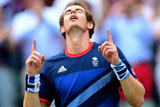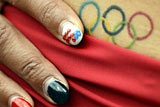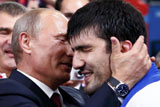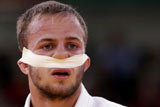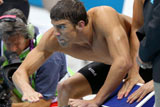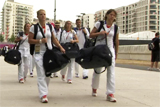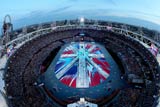
Table Tennis
Updated: 2012-05-14 18:14:37
( london2012.com)
|
|||||||||||
Power, subtlety and lightning-fast reflexes will all be on display at ExCeL during the Table Tennis competition.
The sport has come a long way from its origins in the late 19th century, when it developed as an after-dinner game played by upper-class English families. More than a century later, Table Tennis is a breathtaking spectacle that blends power, speed, skill and subtlety. It's the biggest participation sport in the world.
 |
Competition dates
July?28?-?Aug 8 ?
Competition venue
ExCeL
Number of medal events
Four - men's and women's Singles, men's and women's Team.
Number of competitors
172 (86 men and 86 women). Each country is limited to three men and three women across all events, and to two athletes in each Singles event.
Field of play
The court is 18m x 9m; the Table Tennis table itself is 2.74m long and 1.525m wide. It is 76cm above the floor and divided in half by a 15.25cm high net.
History of Table Tennis at the Olympic Games
Since Table Tennis joined the Olympic programme in 1988, China has won 20 of the 24 available gold medals. The only European Olympic gold medallist so far has been the legendary Swedish player Jan-Ove Waldner: nicknamed 'the Mozart of Table Tennis', Waldner won the men's Singles at the Barcelona 1992 Games.
The basics
Table Tennis is based on the same basic principles as Tennis, but it has a very different scoring system, and a ball weighing just 2.7g.
Singles matches are played over the best of seven games, with the first player to 11 points (by a margin of two clear points) winning each game.
Team matches consist of four singles matches and one doubles match, each played over the best of five games. Each team consists of three players and matches end when a team has won three individual games.
In Doubles matches, players take turns to hit the ball, with one hit each before alternating.
Unlike in Tennis where a player serves for a whole game, in Table Tennis the service changes after every two points have been scored. Once the score gets to 10-10, the serve changes after every point. In Doubles games, as well as the serve alternating between teams, it alternates between players too.
Competition format
Both the Singles and Team events are run in a knockout format. Players and teams progress through the draw until the finals. The winners of the semi-finals play in the gold medal match and the losers of the semi-finals compete for the bronze medal.
Players' seedings dictate the round in which they enter the competition. In Singles, the 16 highest-ranked players qualify for the third round, players ranked from 17 to 32 qualify for the second round, and all other players qualify for the preliminary or first round. In Doubles, a special team rankings list is used to established the seedings.
Officials
An umpire and assistant umpire sit or stand on either side of the table, in line with the net. They are responsible for ensuring the game is played within the rules and that the score is kept and announced accurately.
Keys to success
Table tennis is played at high speed and players need lightning reactions, incredible agility and high levels of fitness.
Breaking the rules
As well as matching the speed of play of their opponent, players need to ensure they stay within the rules of the game. A point can be awarded to the opposition for an infringement such as touching the table or net, an illegal serve, or a Doubles player striking the ball out of sequence.
Jargon buster
Blade - the flat, rigid part of the racket used for striking the ball.
Loop - an attacking shot, often played with plenty of topspin.
Penhold - a type of grip where the racket is held as if it were a pen.
Let - as well as service lets (similar to Tennis), a let may be called if play is interrupted - for example, by a ball from another table entering the playing area. If this happens, the rally is replayed.
Time-out - each player may claim a time-out of up to one minute during an individual match.
Medal Count |
||||
| 1 | 46 | 29 | 29 | |
| 2 | 38 | 27 | 22 | |
| 3 | 29 | 17 | 19 | |
| 4 | 24 | 25 | 33 | |
| 5 | 13 | 8 | 7 | |
| 6 | 11 | 19 | 14 | |


